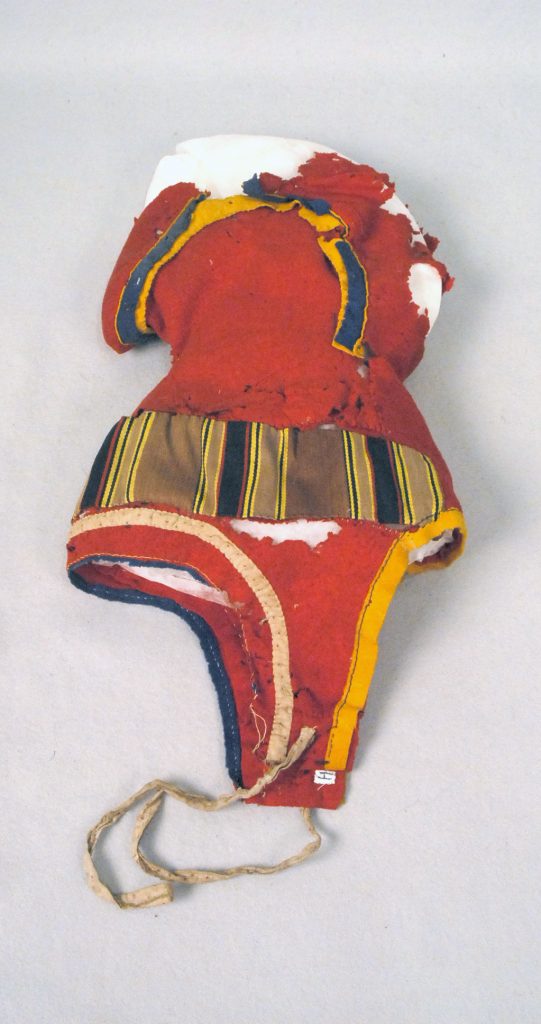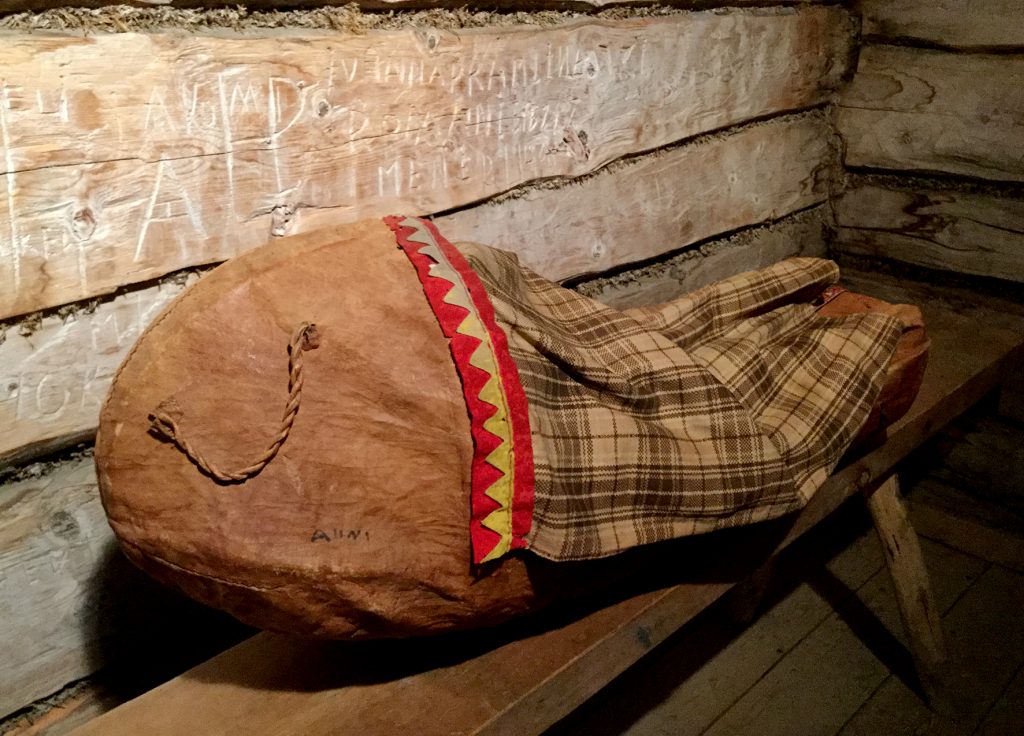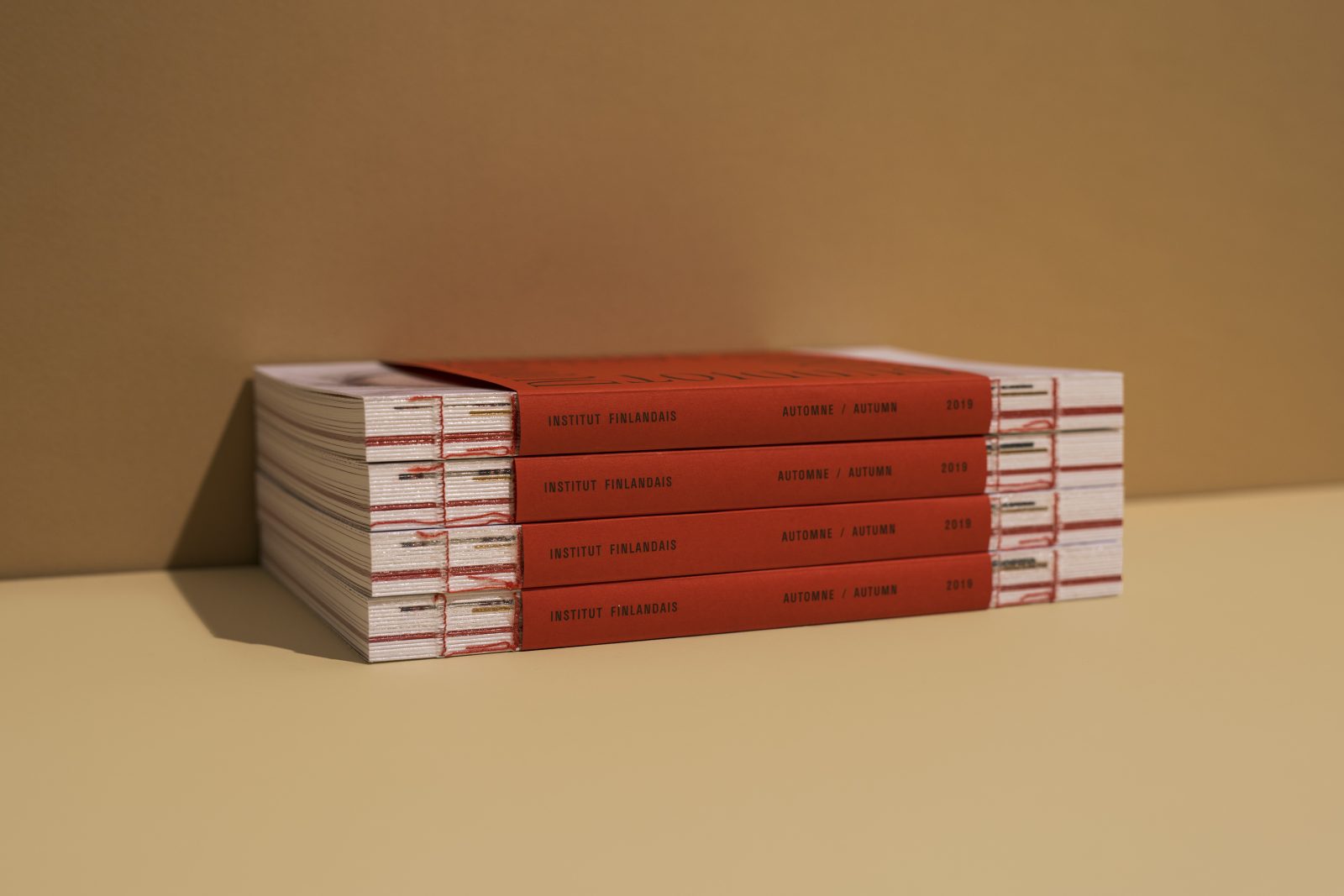Sámi Objects Return to the Sámi Country
In 1905 the Finnish artist Gabriel Engberg travelled to Finnish Lapland, looking for inspiration for his artistic work. On his journey, he made a stop in the Inari region where he met with Sámi locals. He purchased some of their handicrafts as souvenirs. Engberg later became the curator of the Häme museum, and the objects he had acquired in Lapland, the land of the Sámi, ended up in the museum’s collections. Engberg was one of many travellers who journeyed in the Sámi lands. Many of them collected Sámi cultural objects, which made their way to museum collections and exhibitions outside of the Sámi country. Today, repatriations are bringing these pieces of Sámi cultural heritage back home to the Sámi country.
For centuries museums around the world have collected, studied and exhibited the cultural heritage of indigenous people. In these museums, indigenous cultural heritage has been interpreted in a different, foreign context, from an outside point of view. As a consequence, the traditional knowledge and know-how related to indigenous cultural heritage have been forgotten, and the objects have become museum pieces that symbolise an exotic and foreign otherness.
Sámi country and the Sámi people, too, have long fascinated travellers and officials. The Sámi are the indigenous people of Northern Scandinavia and Russia, who speak several different Sámi languages and whose traditional livelihood is based on reindeer herding, fishing and hunting. Regional, linguistic and cultural differences divide the Sámi into several smaller subgroups within the larger Sámi community. For centuries the Sámi have maintained excellent connections with the outside world and have been trading throughout Europe. The Arctic and the Sámi who inhabit it have been an object of fascination for centuries, and so pieces of Sámi cultural heritage have been scattered in museums around the world.
In the past decades, indigenous nations around the world have intensified their demands for the repatriation of their cultural heritage, which has led to widespread repatriation processes. In this context, repatriation means the returning of cultural heritage back to its native country or community. The debate on who exactly owns and manages the indigenous past continues and intensifies. For many indigenous peoples, repatriations are a way to revive lost and forgotten traditions. Consequently, we have been able to witness numerous repatriations of both material and immaterial cultural heritage of various indigenous peoples. The Sámi people, too, are working more and more actively towards repatriation of Sámi cultural heritage back to Sámi country.
In 2015, over 100 years after the painter Engberg’s voyage to Lapland, the objects he had acquired returned to Inari. The Museum Centre Vapriikki in Tampere wanted to bring the Sámi objects back to their original home, and the first repatriation of Sámi cultural heritage in Finland took place. This repatriation started a chain of repatriations in Finland – already four museums have returned collections of Sámi objects to the Sámi community. The most important of the repatriations is without a doubt the agreement signed between the Finnish National Museum and the Sámi Museum, which stipulates the return of a collection of 2,500 Sámi objects to the Sámi community. The repatriation will take place once an appropriate space for housing the collection at the Sámi Museum and Nature Centre Siida will be completed in 2020.

Sámi Cultural Heritage in Museums
Before the founding of the Sámi Museum Siida, the cultural heritage of the Sámi living in Finland has been preserved mainly at the Finnish National Museum, which houses a collection of 2,500 Sámi objects. Many well-known ethnologists and linguists, friends and advocates of the Sámi people and administrators posted in Lapland have contributed to the collection at the National Museum through donations. Smaller collections of Sámi objects, however, can be found in other museums in Finland and Europe. These collections contain mostly objects acquired in Sámi country in the 18th and 19th centuries. They contain many rarities – objects that are no longer in use in the Sámi community and whose original use and function have even been forgotten.
Founded in 1959, the Sámi Museum Siida started to work on its collection right away. A large part of material Sámi cultural heritage was destroyed during the last years of the Second World War, in the Lapland War of 1944-45. As the German troops retreated from Finnish Lapland to Norway they burned vast areas of land, as well as villages, especially those situated along roads. The Sámi Museum was founded by the first Sámi association, Samii Litto, with the mission to collect and document the surviving remains of the Sámi cultural heritage after the war. In 1998 the Sámi Museum Siida acquired modern facilities, and the following year it was granted the status of a national specialised museum, with a mission to preserve, study and exhibit the cultural heritage of the Sámi in Finland. The Sámi Museum Siida is the only institution to have this particular official status and mission in Finland.
The Sámi in Norway and in Sweden have their respective Sámi museums. Ajtte, the Swedish Mountain and Sámi Museum, is based in Jokkmokk; Norway, on the other hand, counts several regional Sámi museums. Norway is also in the middle of a repatriation process of Sámi cultural heritage, launched by the Bååstede project in 2007. Norsk Folkemuseum will return half of its Sámi collections to Norwegian Sámi museums. The Sámi objects will return to the museum located in their region of origin.
In 2007-2008 Scandinavian Sámi museums got together for a joint project called Recalling Ancestral Voices – Repatriation of Sámi Cultural Heritage. Together the Sámi museums mapped out the Sámi collections in Scandinavian museums. Providing vast amounts of information on the contents, backgrounds and scale of the Sámi collections, it was an important first step for the repatriation of Sámi cultural heritage. Perhaps the most significant result of this project was that it made the Scandinavian museums take stock of their Sámi collections and envision returning them to the Sámi community.

Repatriations Matter
Repatriations have a tremendous significance for the Sámi community because as an indigenous people they are entitled to manage their own cultural heritage. Museums are powerful builders and strengtheners of the cultural identity of both individuals and communities. Indeed, one of the central functions of an indigenous people’s museum is to support cultural identity. The collections and exhibitions of a museum reflect its background, mission and chosen point of view, and are therefore always an interpretation of a culture, a phenomenon or a theme made from these premises. Cultural heritage that has been moved out of the reach of an indigenous people does not give the indigenous people the opportunity to manage, interpret and present its cultural heritage from its own point of view. Repatriations are a partial solution to this problem. It is important for the Sámi and Sámi museums, too, to be able to talk about their cultural heritage in their own words and ways and to define what parts of the cultural heritage ought to be safeguarded for future generations.
In Sámi country, within the reach of the Sámi community, the Sámi collections take on an added value. It is often possible to trace the origin of the repatriated objects, which enables people to connect with their ancestors through them. There is no doubt the greatest significance of repatriation is symbolic. The objects of the ancestors are returning home after a hundred-year trip to the South. Indeed, the traditional knowledge, the stored memory, the history and the handprint of the ancestors matter more than the returning of the concrete object. For centuries, Sámi culture has been interpreted through objects collected from Sámi country; it is now crucial that the Sámi themselves can use and interpret this knowledge from their own point of view. In this way, the Sámi can begin to manage their own cultural heritage.
In addition to the symbolic value, repatriations have an important practical meaning. Through repatriations Sámi cultural heritage returns to the Sámi country, where it is more readily accessible to the Sámi community. When the collections are in the vicinity of their users, the community can enjoy them more easily. The Sámi community will also have an opportunity to participate in curatorial work and to plan and develop the work in collaboration with the Sámi Museum. It is true, however, that 60% of Sámi people live outside of the Sámi homeland and it is important that the collections are also within their reach. At the Sámi Museum Siida we try to find solutions to this by improving the digital accessibility of our collections through online databases and, for example, by 3D modelling of objects. We also like to go outside of our immediate surroundings, the Sámi homeland, to disseminate information about our collections and the work related to them.

From the indigenous museums’ point of view, repatriations reinforce their status as organisations that collect, study and present indigenous cultural heritage. Repatriations have strengthened The Sámi Museum Siida’s role as the keeper of the Sámi community’s memory and memories. The collections of the Sámi Museum consist mainly of objects made and acquired after the 1930s. Through repatriations, the collections have been completed with pieces dating from early 20th century and the 18th and 19th centuries. As a consequence, it is now possible to exhibit the older collections to the community on a larger scale than it would be in other museums. It also makes it possible for the Sámi community to study the older objects and to remember, revive and reclaim the partially forgotten or entirely lost traditions and know-how related to these objects.
It is important to know one’s own roots – to know where we come from helps us understand who we are now and where we are going. Knowing one’s roots is at the centre of the construction of the identity of both the individual and the community. Sámi museums play an important role as the keepers of Sámi roots and Sámi collective memory. Thanks to repatriations Sámi museums are able to fulfil their important function in a fuller way, and the Sámi community is able to reminisce and remember again its past and to re-establish, maintain and strengthen its connection with its roots. Repatriations bring the past generations, their world view and their handprint closer to us. It is incumbent upon us to continue to grow the roots for future generations.
Amanuensis Anni Guttorn
Sámi Museum Siida, Inari
The text from this article appears in our IF publication which is distributed at Institut finlandais. Photography on the publication: Sofia Okkonen.
